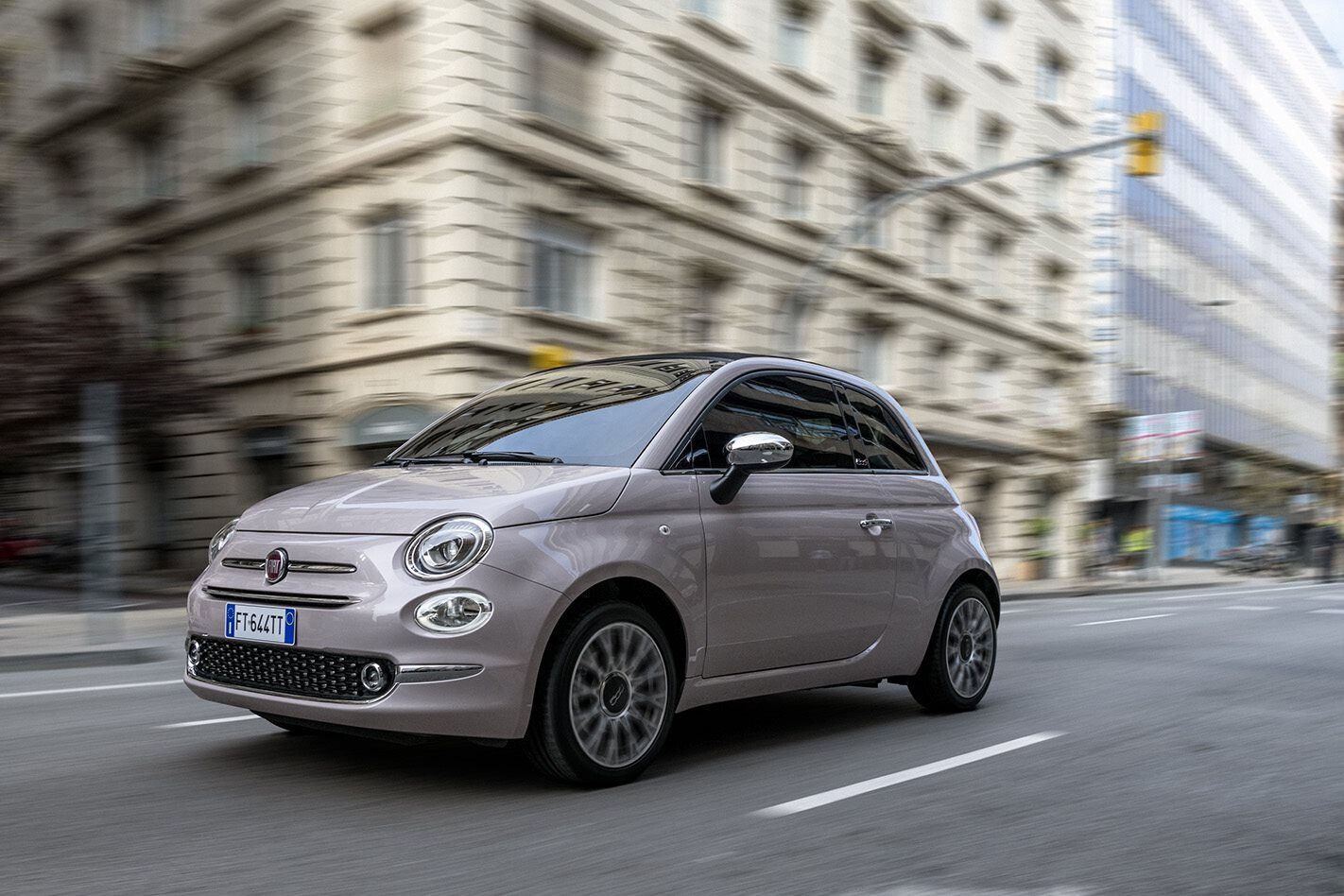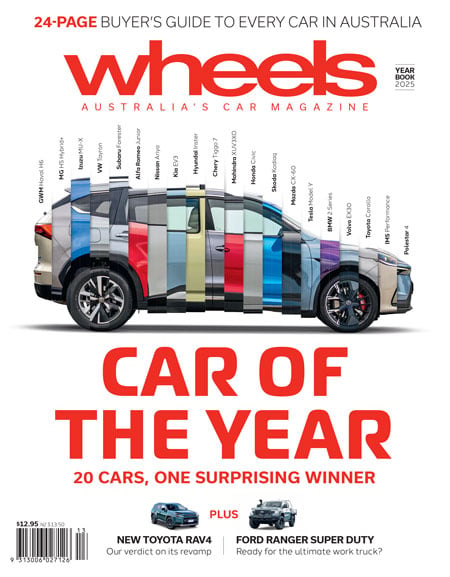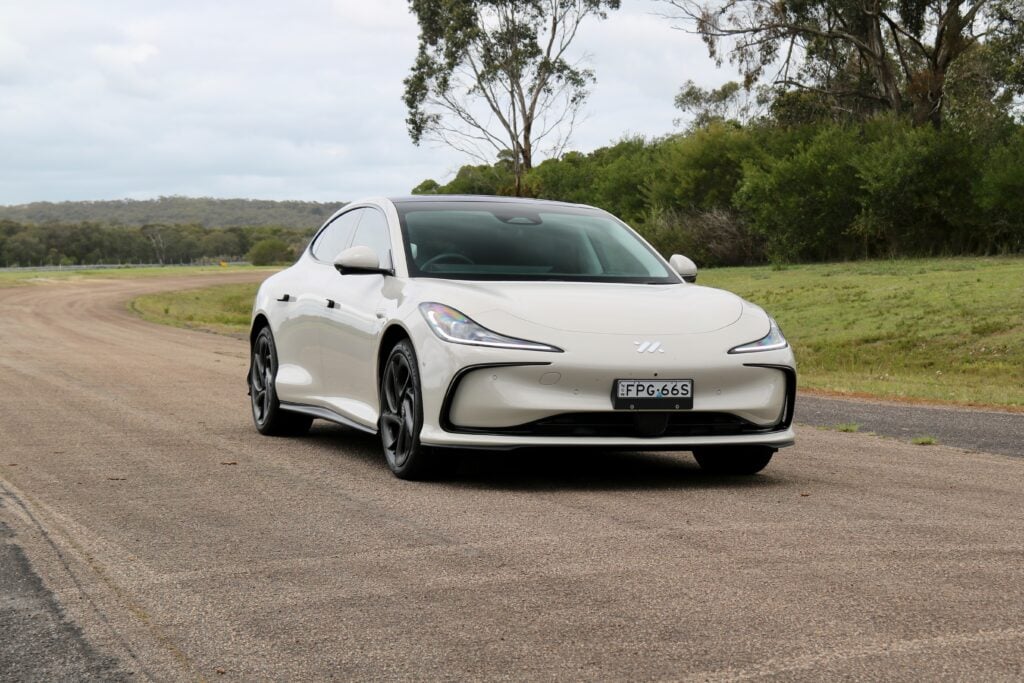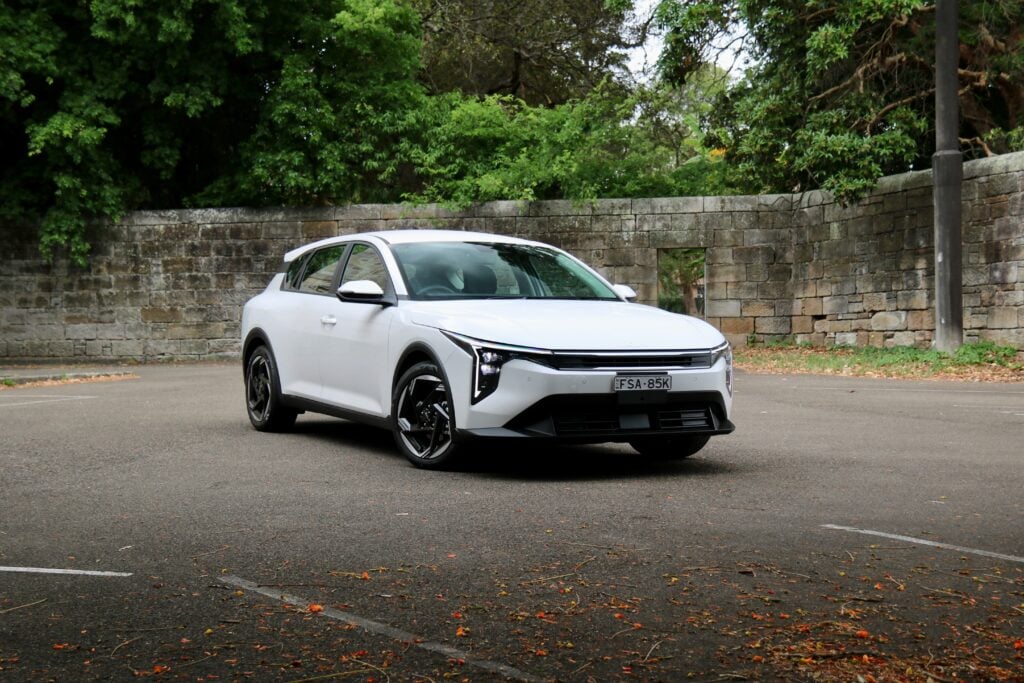
Score breakdown
Things we like
- Style, parking, fuel use, handling
Not so much
- Price, power, no auto braking, rear seats laughable
What stands out?
The Fiat 500 is all about style over substance, with cute-as-can-be looks and a cool and trendy interior – particularly when optioned with coloured leather seats. It is all wrapped around a little engine but it’s great fun to drive, thanks to diminutive dimensions and, especially as a manual, a willing gearbox. The Abarth 595 takes that driver enjoyment further, with significantly more power that gives the iconic Italian mini car warm-hatch performance.
What might bug me?
How much you paid for your Fiat 500, compared with what you might pay for something less cute.How paying more doesn’t bring the additional safety provided by autonomous emergency braking and other driver assistance featuresThat your warranty period will end at least two years before most other cars – Fiat only offers a three-year/150,000km warranty where most other brands offer at least five years.Catching yourself muttering “I think I can, I know I can” up steep hills. A 500 has to work hard on big climbs.Feeling like you’re sitting on a bar stool in the Abarth 595. The driver’s seat doesn’t adjust low enough to really enjoy the driving experience.
What body styles are there?
A three-door Hatch, which is more like a tiny coupe than a traditional hatch, and convertible (the 500C/595C).The Cabrio doesn’t offer your traditional cabriolet folding top: it has a roof reminiscent of a rollback tin on a sardine can. It does let the sun in, however, which can make this little fun box seem even more joyous on a warm day.It’s a front-wheel drive layout, and sits well and truly in the micro car class.
What features do all Fiat 500s have?
A 7.0-inch touchscreen from which you can run the six-speaker stereo system, via Fiat’s Uconnect. It comes with satellite navigation, digital radio, Bluetooth music streaming, voice command, aux and USB inputs, and iPod compatibility.Support for Apple CarPlay and Android Auto, which lets you display some smartphone apps on the touchscreen and control them from there (or by voice).Reversing camera, rear parking sensors and digital speedo.A leather wrapped steering wheel, with buttons to control all that audio from.Daytime running lights, which help other drivers see you, lit by efficient and long-lasting LEDs.Wheels made from aluminium alloy (which look better than steel wheels and usually are lighter). A space-saver spare wheel. Tyre pressure monitors, which warn you if a tyre is going flat.Patterned upholstery, and height adjustment for the driver’s seatPower-raising windows, and power-adjustable and heated exterior mirrors (which are also body coloured). Air-conditioning.Hill-holder, which helps you start from rest on uphills. (Even if you’re driving the manual you won’t roll back when starting from traffic lights or Stop signs.)Seven airbags. Electronic stability control, which helps prevent and control skids. (For the placement of airbags, and more on Fiat 500 safety features, please open the Safety section below.The Fiat 500 carries a three-year/150,000km warranty.
Which engine uses least fuel, and why wouldn’t I choose it?
Only one engine is available in a 500, 1.2-litre four-cylinder petrol, while the Abarth 595 comes with a choice of two 1.4-litre four-cylinder turbocharged petrols.The 500’s 51kW 1.2-litre engine is the most efficient and consumes as little as 4.8 litres/100km on the official test (city and country combined). In the real world, expect about 6.5 litres/100km.A five-speed manual transmission is standard, and a five-speed dual-clutch automatic that Fiat calls “Dualogic” is optional.The Abarth 595 has the same choice of gearboxes, coupled with a bigger 107kW 1.4-litre four-cylinder turbocharged petrol that’s twice as powerful as the 500’s.Fuel consumption for this engine is about 6.0-litres/100km, though if you drive it with the enthusiasm it demands, you’re more likely to average about 7.0-litres/100km.The Abarth 595 Competizione’s 1.4-litre turbo brings even more power, 132kW, that brings noticeably superior performance and a manic exhaust note from the Monza exhaust system.Despite the extra power, official fuel consumption is also 6.0-litres/100km.One reason you wouldn’t go for the more economical 1.2-litre engine is because you prefer the Abarth 595’s boosted performance and sporty look.
What key features do I get if I spend more?
The least costly Fiat 500, the Lounge, comes with a 5.0-inch touchscreen, 15-inch alloy wheels, two-tone cloth covered seats and the features in any 500. It comes with the five-speed manual gearbox as standard, with the five-speed automatic gearbox about $2000 extra.Spending more for a 500 Club gets you the automatic gearbox as standard, plus more chrome bits, sunroof (hatchback only), digital radio, climate control air-conditioning, premium chequer-pattern seat upholstery, automatic headlights, rain-sensing wipers and bigger 16-inch rims.Pastel or metallic paint, in a whole swirl of colours, is about $500.The other way you can spend more on either the Pop or the Lounge is to get it in Cabrio (or 500C) form, with the retractable roof – worth considering if you’re a sun worshipper. Roof aside, equipment matches the Lounge and Club hatches though there is no manual gearbox option.The Abarth 595 is sporty version of the Fiat 500 with a significantly more powerful 1.4-litre turbocharged petrol engine.The Abarth 595 builds in the Fiat 500 Lounge’s features and adds a bigger 7.0-inch touchscreen with Apple CarPlay/Android Auto smartphone pairing.The rest of the features give the Abarth 595 a much more athletic appearance and include bigger 16-inch alloy wheels, powered body coloured mirrors, satin chrome exterior trim and dual-tip chrome exhaust.Step up to the Abarth 595 Competizione and you get an even more powerful 1.4-litre turbocharged engine, dual-mode ‘Record Monza’ exhaust system, and 17-inch “Corsa” alloy wheels.The interior gains leather sports seating, while the exterior stands out over the standard 595 Abarth with Tar Cold Grey powered external mirrors and trim and Abarth side stickers.Stopping power is increased with four-piston Brembo performance brakes with distinctive red calipers.Both Abarth 595 variants are available with both manual and automatic transmissions, a convertible version, and an optional 440w BeatsAudio seven-speaker sound system.
Does any upgrade have a down side?
Paying extra for automatic transmission makes the car less fun to drive and gets you less joy out of the little engine. Changing gears yourself, as the Italian designers intended, is the best way to get the most from this city car, especially the Abarth versions.Upgrading to the 500/595C soft-top is also a questionable way to spend money. All it really offers is an oversized sunroof, because it’s not a proper convertible.The Abarth 595 Competizione has a back jarring ride on its stiffer suspension and bigger 17-inch, low-profile tyres.
How comfortable is the Fiat 500?
Perhaps the biggest surprise is that the Fiat 500 doesn’t feel tiny or cramped inside, or at least not unless you’re big enough to try out for the NBA. Headroom, in the front at least, is more than acceptable, and there’s a real feeling of space created by the design of the dash and the slope of the windscreen.It doesn’t feel like a Gold Class cinema, but it’s not claustrophobic as you might expect.The seats are reasonably comfortable without being exactly plush. The (optional) leather seats do have a quality feel to them, as if the raw materials might have been stolen from a handbag factory.The sports seats in the 595 Competizione can feel tight around the hips for people with bigger frames.The 500’s ride is not exactly plus Euro style, but it’s not overly jarring or sportily firm either. Overall you’d describe it as better than adequate. The 595 Abarth on the other hand has a more jarring ride because of its harder sports suspension, this is especially the case with the 595 Competizione which feels very jarring over bumps.The 500 is not a particularly quiet car, because the engine is always working quite hard, but it’s not annoyingly noisy in the cabin either. Overall, it’s a lot more comfortable than you’d expect by looking at it.The 595 is noisier but in a good way, especially the Competizione which makes some nice noises through its Monza exhaust.Out on the highway, the 500 can handle our national speed limit with ease, the 595 more so – possibly because everyone drives much faster than that in Italy.
What about safety in a Fiat 500?
Every 500 comes with anti-lock brakes, stability control, seven airbags, and LED daytime running lights. That is about what you get with most micro cars.The airbags are placed in front of the driver and front passenger; alongside those occupants at chest level; and alongside them at head level. The seventh is a knee airbag for the driver.Lounge and 595 models add rear parking sensors, which help you avoid reversing into something (or someone).No 500 or 595 offers a rear-view camera. Fiat might argue that with a car this small you don’t need one.Neither the 500 or 595 offers active safety aids such as autonomous emergency braking (which can brake automatically to prevent your ramming a car in front).You might want to consider the size of the crumple zones. If this car is hit by an SUV, or even a normally sized sedan, it’s probably going to come off second best.Despite being so tiny, the previous Fiat 500 was given a five-star safety rating – the maximum – by the Australasian New Car Assessment Program (ANCAP) in 2008. This car keeps that rating, though the lack of active safety features means it would be unlikely to receive five stars if tested today.
I like driving – will I enjoy this car?
Amazingly, yes. The Fiat 500 is one of those cars that proves you don’t have to be fast in a straight line to have fun. That said if you do like things a little quicker there is always the 595.There’s something about the design that just makes you smile when you look at it, or sit inside it, for a start. But there’s also something simply joyous about the way it handles – helped by a short wheelbase and tiny dimensions overall, which provide a Mini-like experience – and the puppy-like willingness with which it responds to your urgings.Particularly when combined with the slick and short-shifting manual gearbox, the engine is just zesty enough to keep you interested. Steering is also direct and go-kart like.The 500 is a car that surprises in many ways. On paper, and even in the flesh, it doesn’t look like much, but the driving experience really is more than the sum of its parts. As long as you’re not in a hurry, or climbing lots of hills.The Abarth 595 offers go-kart-like thrills, especially the more powerful Competizione.
How is life in the rear seats?
It’s probably quite pleasant if you’re a dust particle or a microbe, and very small children seem to enjoy it.But anyone larger than a teenager is going to be disappointed, and possibly enraged, by the lack of rear leg space.The two-door design and limited room for sliding the front seats forward also makes it painful to get into or out of. This is very much a car for two people, with a seat in the back for storing small items or placing your shopping on.The lack of comfort at the back of the Abarth 595 is compounded by the harsher ride.
How is it for carrying stuff?
The rear seat folds 50:50, but even with both of them down you won’t be carrying a lot of suitcases. The Fiat 500 has a boot, but at 135 litres it’s not particularly capacious. Storage space is what you’d expect from its dimensions, and that’s minimal. Even large grocery shops will be a challenge, and you can forget trips to Ikea for furniture.Use the back seats to carry extra things, as they’re not great for people.
Where does Fiat make the 500/595?
The Fiat 500 and Abarth 595 are built in Tychy, in Poland, which doesn’t seem to have affected the Italian look and feel at all.
What might I miss that similar cars have?
Autonomous emergency braking, which can apply the brakes automatically to prevent your crashing into a car in front. That is standard on the Kia Picanto.The price of a Fiat 500 takes you well into slightly bigger, light car, territory – Mazda2, Honda Jazz or Volkswagen Polo, for example. Here auto emergency braking is more widely available (it comes with every Mazda2), along with more space.More refined ride and handling that you get from similarly priced (or cheaper) but superior Abarth 595 rivals such as the Renault Clio RS or VW Polo GTI.
Are there plans to update the Fiat 500 soon?
The Fiat 500 was updated in March 2016, offering two engines – a 1.2 litre in the Pop and a more lively 1.4-litre in the Lounge. About the middle of 2017 Fiat discontinued the 1.4 engine, instead offering the 1.2-litre at Pop and Lounge trim levels but preserving other features.The Abarth 595 range was also trimmed in September 2017, to just the 595 and 595 Competizione. Fiat Australia added a bigger 7.0-inch touch screen and Apple CarPlay/Android Auto to both of these (but not the Fiat 500) in May 2018.In January 2020 the cheapest Fiat 500, the Pop, was deleted from the range which made the Lounge the new entry-level version which raised the base price. The Fiat 500 Club was also introduced as a new top-spec version above the Lounge.Fiat has not announced a significant future upgrade for the 500, but look out for equipment updates and special edition versions.
I like this car, but I can’t choose which version. Can you help?
The 500 Lounge, with a manual gearbox, gets you most of what a 500 offers.That leaves you the choice of Hatch or Cabrio. Considering the limitations of the roll-back roof system, the Hatch seems like the better value choice – and must, in engineering terms, be more solid as well.If you desire the extra pep and sporty appearance that the 595 offers go all the way with the Competizione, which offers a genuine step away from the 500 in terms of performance and equipment.
Score breakdown
Things we like
- Style, parking, fuel use, handling
Not so much
- Price, power, no auto braking, rear seats laughable



